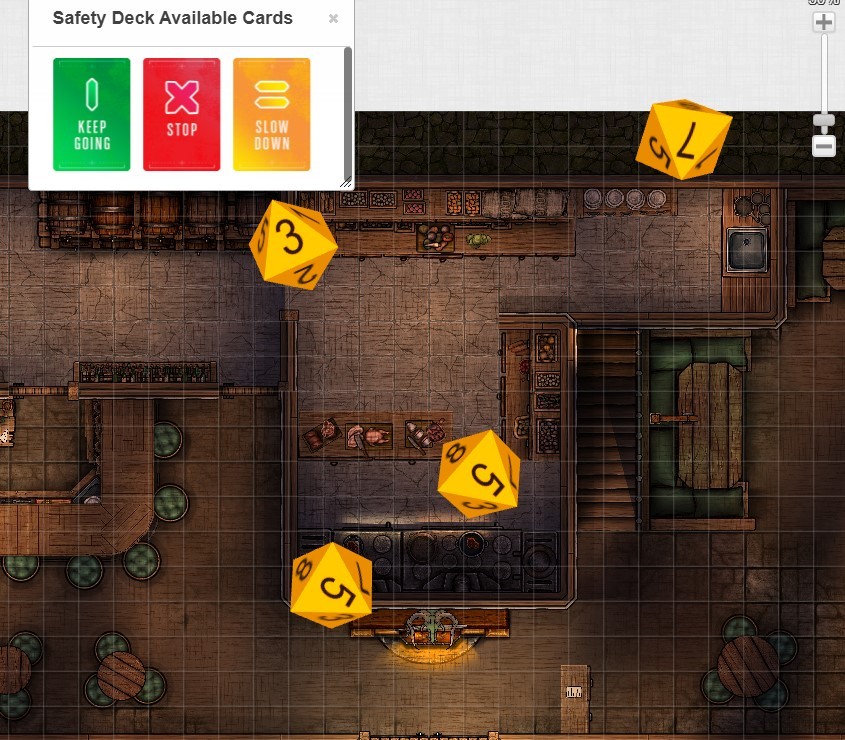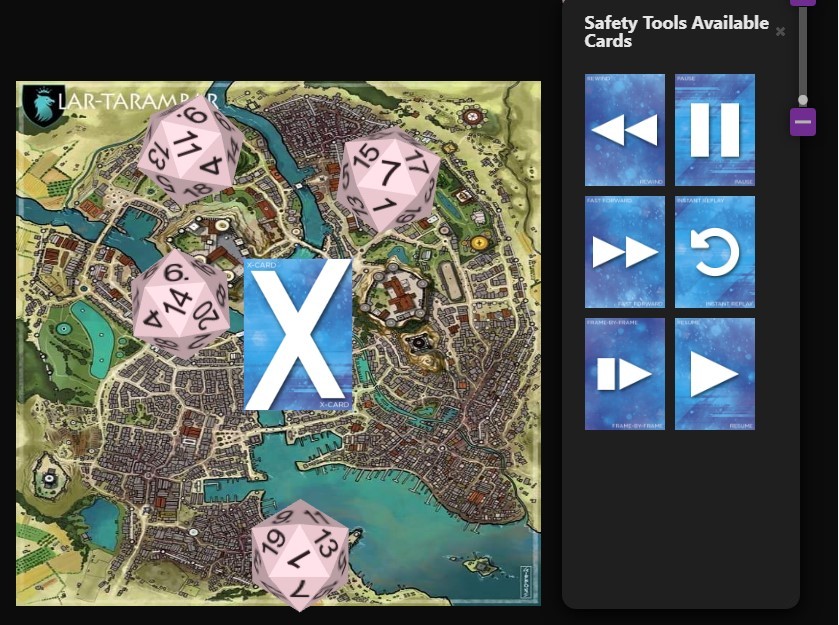
In a 2020 blog, I discussed how during the pandemic many players of Tabletop Roleplay Games (TTRPGs) turned to platforms online to continue their adventures. I wasn’t alone in turning to TTRPGs for entertainment while stuck at home because that year, National Toy Hall of Fame inductee Dungeons & Dragons saw sales jump 33%! That jump doesn’t even touch on the hundreds of indie TTRPGs that have been released through various crowdfunding sites in the last few years. With more people beginning to play TTRPGs, playgroups have become more diverse. Now you can be playing with friends around the world using various online tabletop options. This wide range of people, however, brings different experiences and expectations to the (virtual and physical) table and it is important to be considerate of this.

If you have watched episodes of an actual play series such as Critical Role, you will understand how TTRPGs can be full of a range of emotional moments as the dice either bless you with successes or curse you with failures. Sometimes during gameplay, it’s hard to tell how much of the emotion expressed reflects the character or the player controlling them. Thankfully, tools exist to help the Gamemaster (GM) and players maintain a safe table. In 2019, Kienna Shaw and Lauren Bryant-Monk created and have since curated the ever-growing TTRPG Safety Toolkit. Within these files are the various tools, transcriptions of panels they have done, and instructions on how to import the tools into virtual tabletops. In their toolkit summary they state: “The key to safety tools is communication and trust. There needs to be an open and respectful line of communication alongside an environment of trust for these to work.” Shaw and Bryant-Monk’s work goes into detail, so I will point out the three stages of game play where tools are used and the ones I personally have found valuable.
Pre-game
Before you even begin rolling dice, it is important to establish Lines and Veils. This has multiple iterations, and some prefer the RPG Consent form by Monte Cook Games. The basic principle of both tools is to ask players in advance to compile a list of topics they absolutely would not like brought up in gameplay (Lines) and then a list of things that could be uncomfortable but wouldn’t necessarily qualify as a full line (Veils). Making this process anonymous means that no player feels embarrassed by the topics they may find difficult to deal with. This list of topics is then presented to the table before the game for everyone’s understanding. During this process, it’s important for players to respond with respect and understand that their fellow players don’t need to explain or justify the reasons behind their list.
During Game
If you have opened a TTRPG book recently, you may have noticed sections about safety. Most of these sections refer to the X-Card by John Stavropoulos or the XNO cards/Traffic Light System, the most common tool used during play. The system provides players (and the GM) with 3 cards: X (Red), N (Yellow), O (Green). The X card signifies the scene has crossed a line and needs to stop; the scene is changed immediately. The N card is a warning of nearing content that could be close to a line or veil. Currently you are safe but proceed with caution or shift onto the next scene. The O card is a check-in card. It is a tool used for scenes where roleplay can be intense and players appear emotional. In this situation the O card is submitted to convey that “I, the player, am okay.”
Post-Game
There are various post-game safety tools in the toolkit, but one I personally enjoy is Stars and Wishes by Lu Quade. It allows players to consider what moments in the session they enjoyed and what they would like to see going forward. It creates an encouraging space for the GM to learn what players want to see and what they could change, or even just shows that the game was fun and everyone had a great time!
As someone who plays my fair share of TTRPGs, I see safety tools as important to make sure we all have fun in and out of character and no one is forced to experience something unpleasant during play. So next time you sit down to play with your adventuring party, whether it be for Dungeons & Dragons, Call of Cthulhu, or Monster of the Week, consider using safety tools. We never know all the experiences of the other players present at the table need to be mindful if we want to make everyone feel welcome on our dice rolling adventures!


